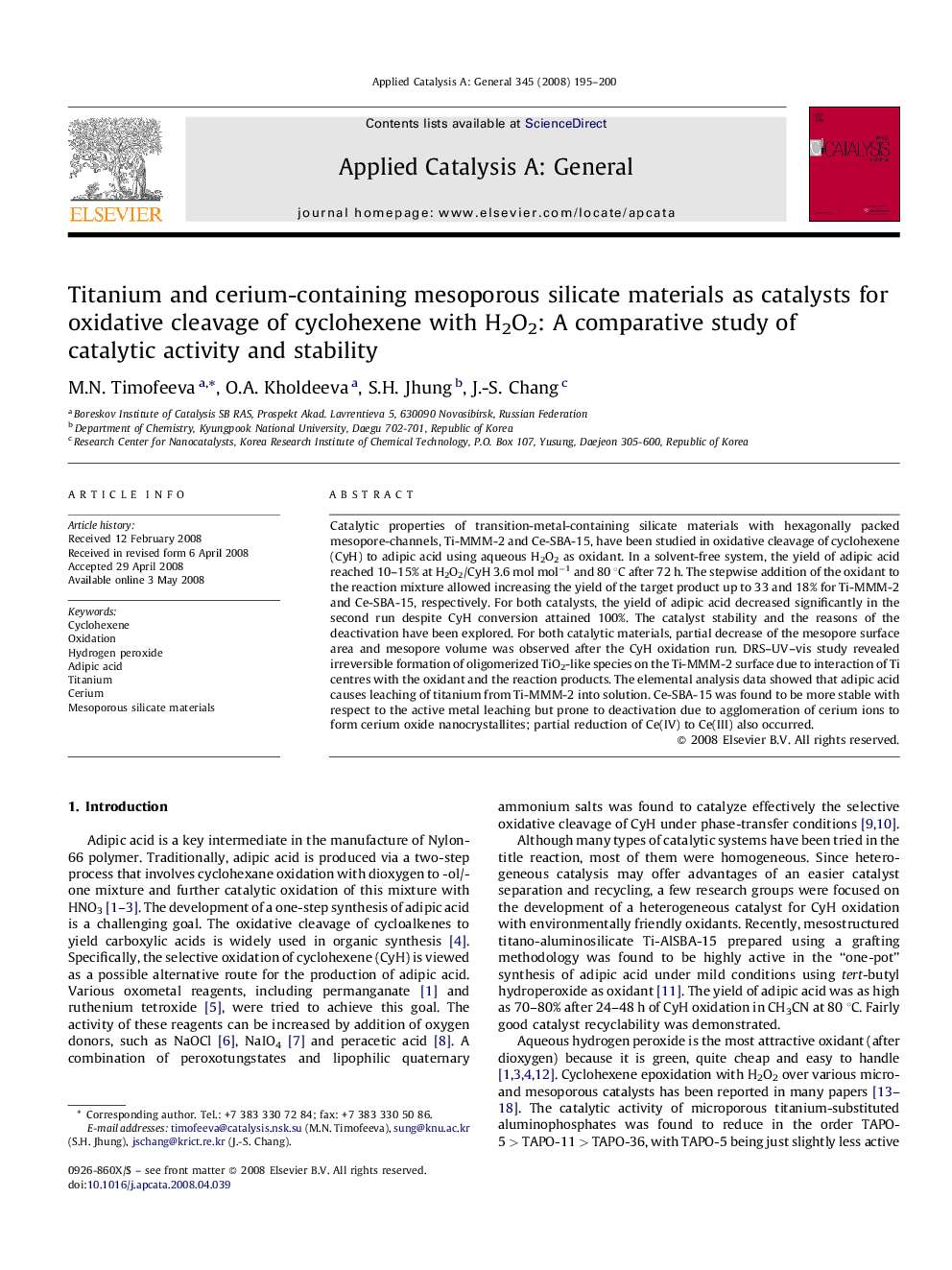| کد مقاله | کد نشریه | سال انتشار | مقاله انگلیسی | نسخه تمام متن |
|---|---|---|---|---|
| 43698 | 45983 | 2008 | 6 صفحه PDF | دانلود رایگان |

Catalytic properties of transition-metal-containing silicate materials with hexagonally packed mesopore-channels, Ti-MMM-2 and Ce-SBA-15, have been studied in oxidative cleavage of cyclohexene (CyH) to adipic acid using aqueous H2O2 as oxidant. In a solvent-free system, the yield of adipic acid reached 10–15% at H2O2/CyH 3.6 mol mol−1 and 80 °C after 72 h. The stepwise addition of the oxidant to the reaction mixture allowed increasing the yield of the target product up to 33 and 18% for Ti-MMM-2 and Ce-SBA-15, respectively. For both catalysts, the yield of adipic acid decreased significantly in the second run despite CyH conversion attained 100%. The catalyst stability and the reasons of the deactivation have been explored. For both catalytic materials, partial decrease of the mesopore surface area and mesopore volume was observed after the CyH oxidation run. DRS–UV–vis study revealed irreversible formation of oligomerized TiO2-like species on the Ti-MMM-2 surface due to interaction of Ti centres with the oxidant and the reaction products. The elemental analysis data showed that adipic acid causes leaching of titanium from Ti-MMM-2 into solution. Ce-SBA-15 was found to be more stable with respect to the active metal leaching but prone to deactivation due to agglomeration of cerium ions to form cerium oxide nanocrystallites; partial reduction of Ce(IV) to Ce(III) also occurred.
Adipic acid can be obtained with the yield of 18 and 33% over transition-metal-containing silicate materials Ti-MMM-2 and Ce-SBA-15, respectively, via oxidative cleavage of cyclohexene with aqueous H2O2. Both high concentration of the oxidant and polar reaction products lead to irreversible catalysts deactivation. Figure optionsDownload as PowerPoint slide
Journal: Applied Catalysis A: General - Volume 345, Issue 2, 1 August 2008, Pages 195–200